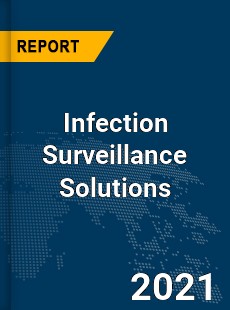Exclusive deal : 20% Instant discount on Direct purchases! Don't wait—claim your discount today!
Market IntelliX aims to provide a complete knowledgeable report so that the readers will benefit from it. The report is properly examined and compiled by industry experts and will shed light on the key information that requires from the clients.
<>
The Infection Surveillance Solutions market is segmented by company, region (country), by Type, and by Application. Players, stakeholders, and other participants in the Infection Surveillance Solutions market will be able to gain the upper hand as they use the report as a powerful resource. The segmental analysis focuses on sales, revenue and forecast by region (country), by Type and by Application for the period 2016-2027.
Geographical Analysis:
Based on region, the Infection Surveillance Solutions market is segmented into North America, Europe, China, Japan, Southeast Asia India and Other regions (Middle East & Africa, Central & South America). Research analysts have studied government initiatives, changing the political environment, and social scenarios that are likely to contribute to the growth of the regional markets.
Key Players:
The major players that are operating in the Infection Surveillance Solutions market are
<>
Infection Surveillance Solutions market Segment by Type
<>
Infection Surveillance Solutions market Segment by Application
<>
Competitive Landscape:
Factors such as cost analysis, marketing strategy, factor analysis, distributors, sourcing strategy, and industrial chain are all the parts of the Infection Surveillance Solutions market. The report also includes the analysis of the return on investment (ROI) feasibility with the estimated SWOT analysis.
The report covers the following objectives:
• Proliferation and maturation of trade in the Infection Surveillance Solutions market.
• The market share of the Infection Surveillance Solutions market, supply and demand ratio, growth revenue, supply chain analysis, and business overview.
• Current and future market trends that are influencing the growth opportunities and growth rate of the Infection Surveillance Solutions market.
• Feasibility study, new market insights, company profiles, investment return, revenue (value), and consumption (volume) of the Infection Surveillance Solutions market.
- 1.1 Research Objective
- 1.2 Scope of the Study
- 1.3 Definition
- 1.4 Assumptions & Limitations
Chapter 2: Executive Summary
- 2.1 Market Snapshot
Chapter 3: Market Dynamics Analysis and Trends
- 3.1 Market Dynamics
- 3.1.1 Market Growth Drivers
- 3.1.2 Market Restraints
- 3.1.3 Available Market Opportunities
- 3.1.4 Influencing Trends
Chapter 4: Market Factor Analysis
- 4.1 Porter’s Five Forces Analysis
- 4.2 Bargaining power of suppliers
- 4.3 Bargaining power of buyers
- 4.4 Threat of substitute
- 4.5 Threat of new entrants
- 4.6 Porter's Five Forces Analysis
- 4.7 Value Chain Analysis
- 4.8 Market Impact Analysis
- 4.9 Regional Impact
- 4.10 Pricing Analysis
- 4.11 Import-Export Analysis
Chapter 5: Competitive Landscape
- 5.1 Company Market Share/Positioning Analysis
- 5.2 Key Strategies Adopted by Players
- 5.3 Vendor Landscape
- 5.3.1 List of Suppliers
- 5.3.2 List of Buyers
Chapter 6: Infection Surveillance Solutions Market By Region
- 6.1 Overview
Chapter 7: Analyst Viewpoint and Conclusion
- 7.1 Recommendations and Concluding Analysis
- 7.2 Potential Market Strategies
Chapter 8: RESEARCH METHODOLOGY
- 8.1 Overview
- 8.2 Data Mining
- 8.3 Secondary Research
- 8.4 Primary Research
- 8.4.1 Primary Interviews and Information Gathering Process
- 8.4.2 Breakdown of Primary Respondents
- 8.5 Forecasting Model
- 8.6 Market Size Estimation
- 8.6.1 Bottom-Up Approach
- 8.6.2 Top-Down Approach
- 8.7 Data Triangulation
- 8.8 Validation
Research Methodology:
Infection Surveillance Solutions Market Size Estimation
To estimate market size and trends, we use a combination of top-down and bottom-up methods. This allows us to evaluate the market from various perspectives—by company, region, product type, and end users.
Our estimates are based on actual sales data, excluding any discounts. Segment breakdowns and market shares are calculated using weighted averages based on usage rates and average prices. Regional insights are determined by how widely a product or service is adopted in each area.
Key companies are identified through secondary sources like industry reports and company filings. We then verify revenue estimates and other key data points through primary research, including interviews with industry experts, company executives, and decision-makers.
We take into account all relevant factors that could influence the market and validate our findings with real-world input. Our final insights combine both qualitative and quantitative data to provide a well-rounded view. Please note, these estimates do not account for unexpected changes such as inflation, economic downturns, or policy shifts.
Data Source
Secondary Sources
This study draws on a wide range of secondary sources, including press releases, annual reports, non-profit organizations, industry associations, government agencies, and customs data. We also referred to reputable databases and directories such as Bloomberg, Wind Info, Hoovers, Factiva, Trading Economics, Statista, and others. Additional references include investor presentations, company filings (e.g., SEC), economic data, and documents from regulatory and industry bodies.
These sources were used to gather technical and market-focused insights, identify key players, analyze market segmentation and classification, and track major trends and developments across industries.
| Market Size |
|
|
| Market Position of Top Company |
|
|
| Qualitative Analysis |
|
|
Primary Sources
As part of our primary research, we interviewed a variety of stakeholders from both the supply and demand sides to gather valuable qualitative and quantitative insights.
On the supply side, we spoke with product manufacturers, competitors, industry experts, research institutions, distributors, traders, and raw material suppliers. On the demand side, we engaged with business leaders, marketing and sales heads, technology and innovation directors, supply chain executives, and end users across key organizations.
These conversations helped us better understand market segmentation, pricing, applications, leading players, supply chains, demand trends, industry outlook, and key market dynamics—including risks, opportunities, barriers, and strategic developments.
Key Data Information from Primary Sources
| Primary Sources | Parameters | Key Data |
| Market Segments(by Application, by Type) |
|
|
| Total Market |
|
|

